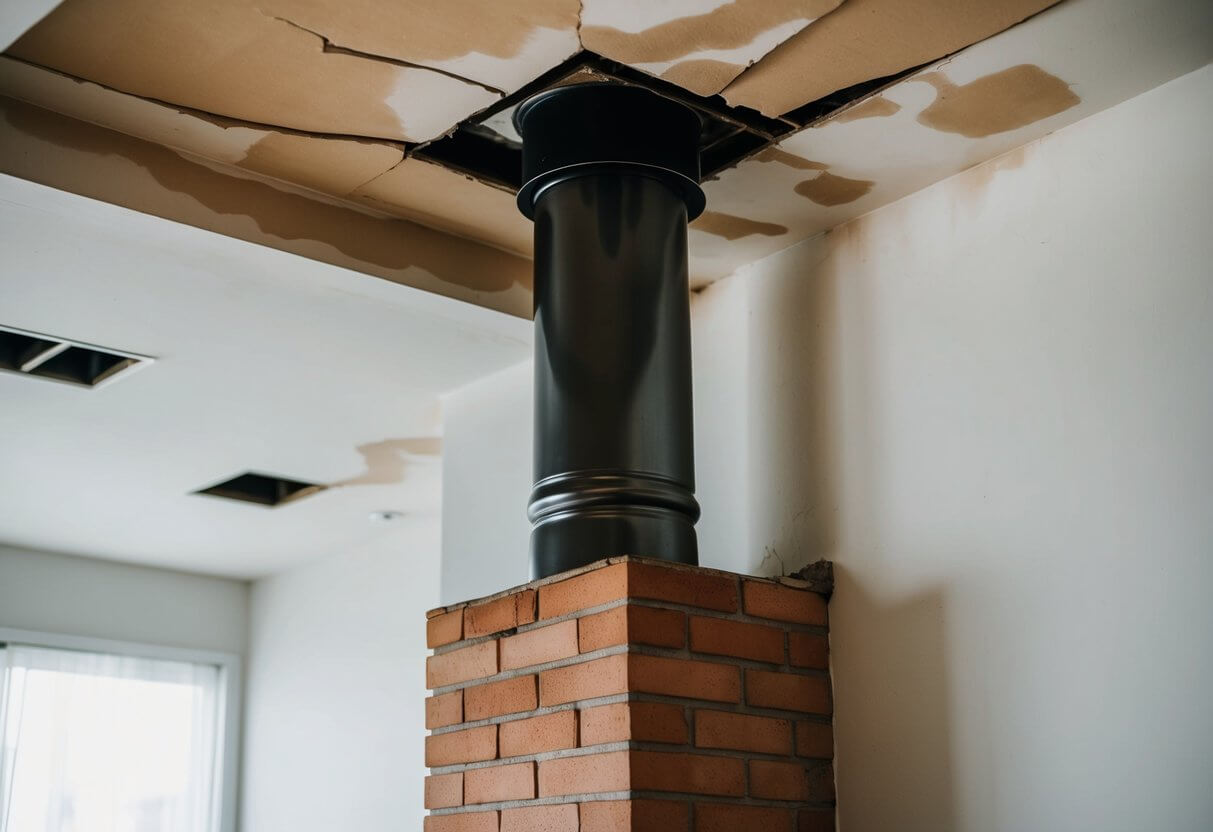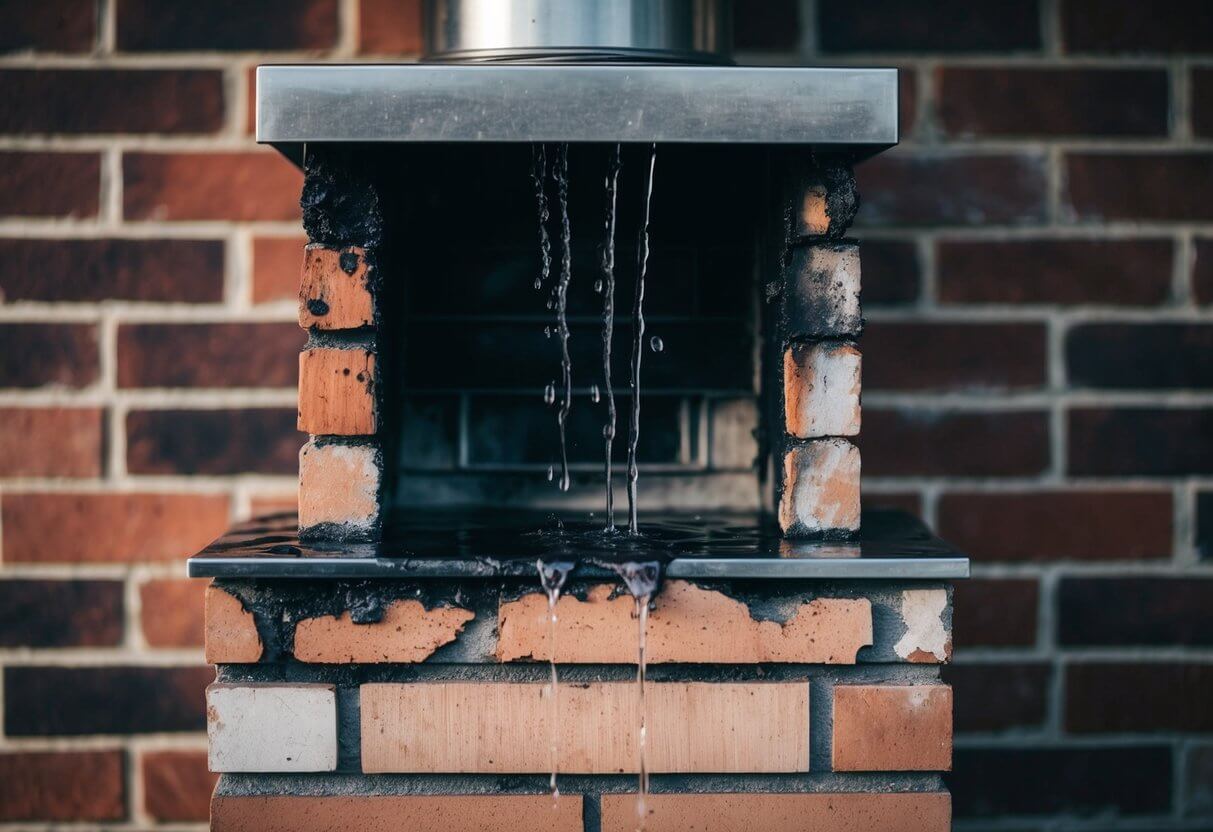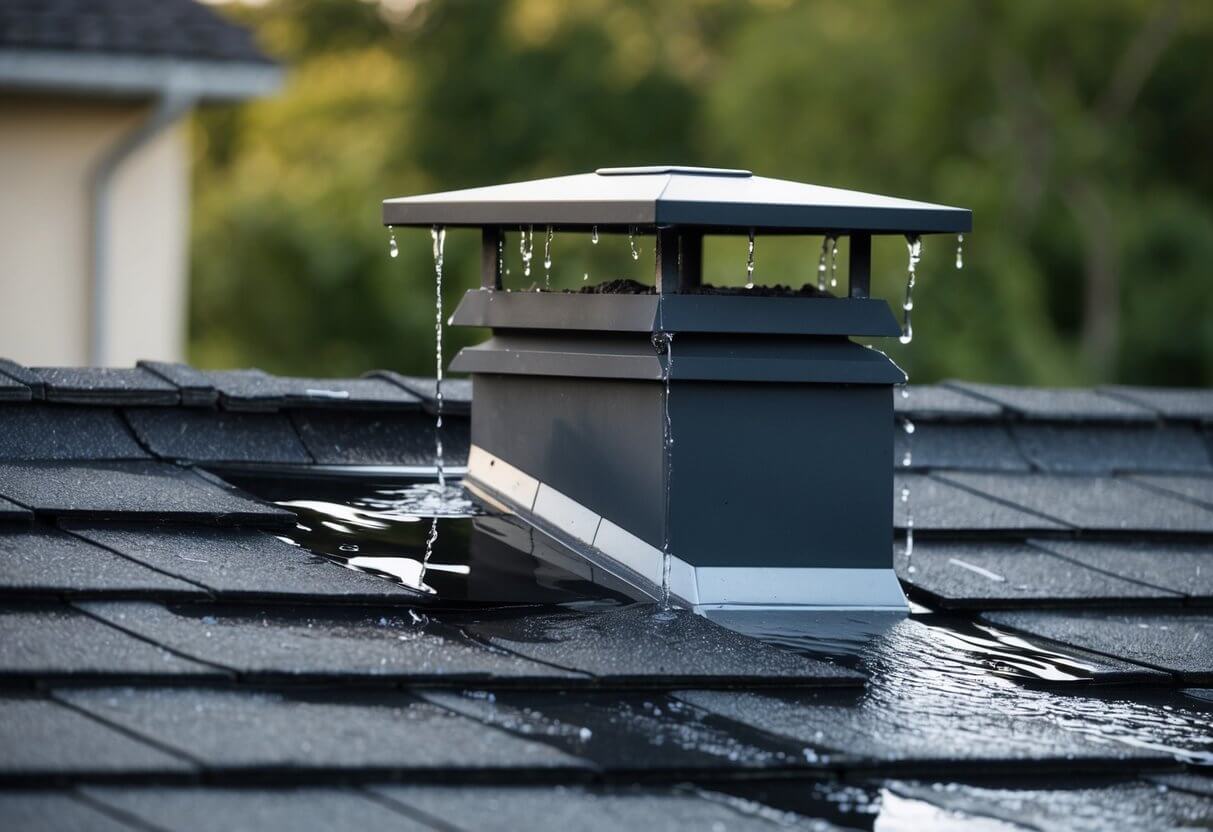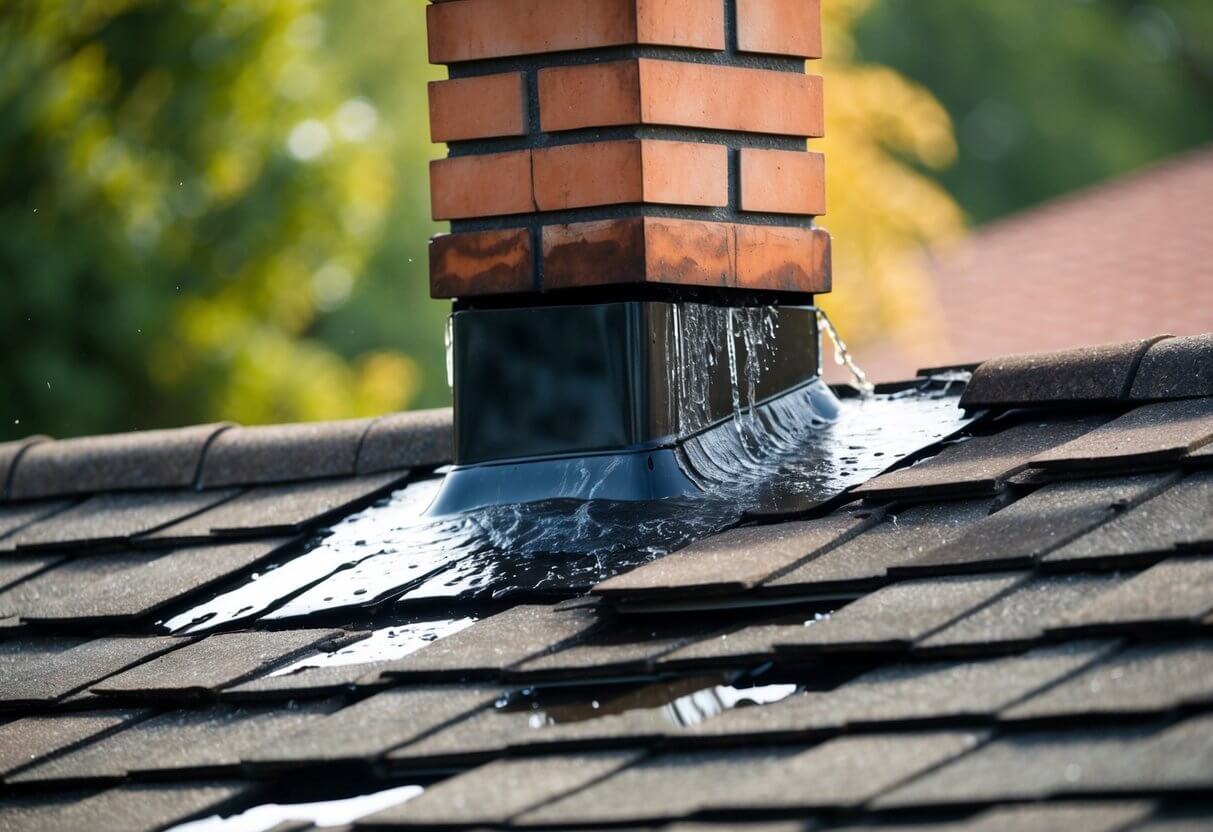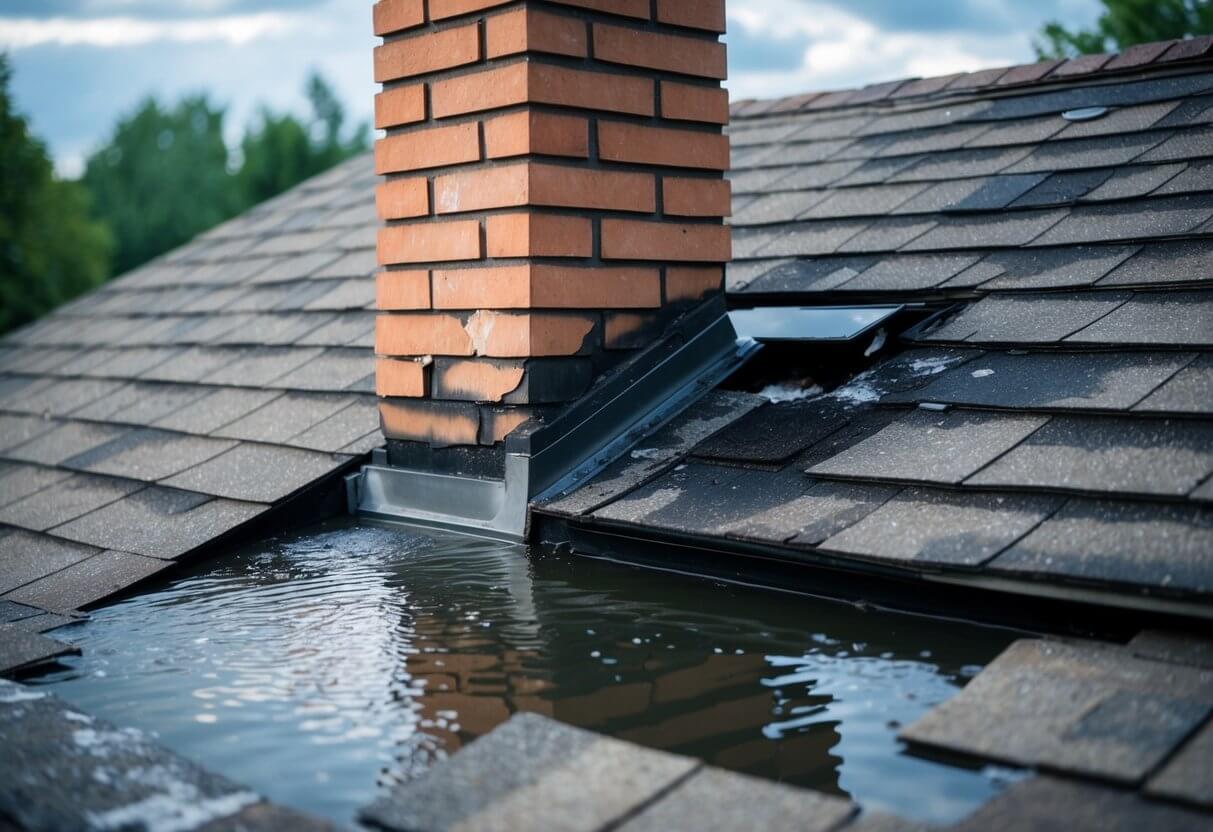Introduction
Chimney leaks can lead to serious structural damage and costly repairs if not addressed promptly. Identifying the signs of a chimney leak early can save homeowners significant hassle and expense. From minor cracks to improper flashing, there are several common issues that can allow water to penetrate and create problems.
Regular maintenance and awareness of a chimney’s condition are key to preventing leaks. Homeowners should be vigilant for signs such as water stains, crumbling masonry, or unusual odors. Understanding the anatomy of a chimney can help in pinpointing potential issues before they escalate into major repairs.
By following proper maintenance protocols and identifying leak sources early, homeowners can not only extend the life of their chimneys but also ensure a safer home environment. This article will explore the common signs and causes of chimney leaks, along with tips for effective prevention and repair strategies.
Key Takeaways
- Recognizing early signs of chimney leaks can prevent major damage.
- Regular maintenance is essential to maintaining chimney integrity.
- Professional help may be necessary for complex chimney repair issues.
Understanding Chimney Anatomy
Chimneys consist of multiple components that work together to direct smoke and gases outside. Familiarity with chimney structure and its common vulnerabilities can help in identifying potential leaks before they escalate.
Structure of a Chimney
A chimney typically comprises several key components:
- Flue: The inner lining that channels smoke and gases outside.
- Crown: The top structure that prevents water from entering the chimney.
- Masonry: The brick or stonework that forms the bulk of the chimney.
- Chimney cap: A cover that protects the flue from debris and animals.
Each component plays a crucial role in maintaining the chimney’s integrity. Regular inspections can reveal issues such as cracks in the masonry or damage to the crown, which can lead to leaks.
Common Vulnerabilities
Chimneys are susceptible to several vulnerabilities that can result in leaks:
- Cracked masonry: Rain and snow can penetrate cracks, leading to water damage.
- Damaged flashing: Flashing around the chimney prevents water from entering the home; if damaged, leaks can occur.
- Non-functioning chimney cap: A worn or missing chimney cap allows rain and debris inside.
Regular maintenance, such as repairing flashing and ensuring a well-fitted cap, can mitigate these issues. Recognizing these vulnerabilities is essential for preventing significant water damage and ensuring safe operation.
Recognizing Signs of a Chimney Leak
Identifying a chimney leak early can prevent costly repairs. Key indicators include visible water damage, structural irregularities, and unusual odors. Recognizing these signs helps homeowners act before significant issues arise.
Identifying Water Damage
Water damage often presents itself as stains on the ceiling or walls surrounding the chimney. Homeowners should look for discoloration, peeling paint, or blistering in these areas.
Regular inspections may reveal mold growth or mildew, which flourish in damp conditions. Spotting these early indicates a potential leak in the chimney.
Pooling water in the fireplace or on the roof can further confirm the presence of a leak. Inspecting flashing, the metal strip surrounding the chimney, for gaps or corrosion is essential.
Maintaining a dry environment prevents long-term damage and costly repairs.
Spotting Structural Irregularities
Structural irregularities can indicate a chimney leak. Homeowners should check for cracked bricks or crumbling mortar. These issues often arise when water infiltrates the chimney structure.
Furthermore, leaning or tilting may signify serious underlying problems. Areas around the chimney should be examined for uneven settling or shifts in the chimney’s position.
Chimney caps that are missing or damaged can also lead to leaks. Regular inspections can help to identify and address these concerns before they escalate.
Unusual Odors and Stains
Unpleasant odors emerging from the chimney area can suggest moisture accumulation, often linked to leaks. A damp or musty smell indicates that water has entered the system.
Stains on the walls or ceilings near the chimney can result from water damage. Homeowners should take note of dark spots or water trails that may develop over time.
Additionally, any presence of animal droppings can signal that water is attracting wildlife, further complicating the leak issue. These signs warrant immediate attention to avoid more significant damage to the home.
Common Causes of Chimney Leaks
Chimney leaks can often be traced to a few common issues that homeowners should monitor. Understanding these causes is essential for effective maintenance and prevention of damage.
Faulty or Deteriorated Flashing
Flashing is a material installed to direct water away from the chimney and onto the roof surface. When it becomes faulty or deteriorates over time, it can lead to leaks. This damage can occur due to age, improper installation, or extreme weather conditions.
Metal flashing should be inspected regularly. Homeowners should look for cracks, rust, or corrosion. If flashing is not sealed properly, water can seep into the chimney structure.
Repairing or replacing faulty flashing often requires a professional. This ensures proper installation and sealing, which can prevent future problems.
Cracked Chimney Crowns
The chimney crown is a concrete or stone slab that protects the top of the chimney. Cracks can develop in the crown due to freeze-thaw cycles, poor construction, or inadequate drainage. These cracks allow moisture to penetrate the chimney.
Regular inspections of the chimney crown are crucial. Homeowners should check for visible cracks or erosion. Sealing cracks with a waterproof sealant can help mitigate leaks.
In some cases, professional repair or replacement of the chimney crown may be necessary. An intact crown is vital for protecting the chimney from water damage.
Damaged Chimney Caps
Chimney caps serve as a cover for the chimney’s opening. They prevent rain, debris, and animals from entering the chimney. If a chimney cap is damaged or missing, this can lead to significant water intrusion.
Common issues include rust or corrosion in metal caps and cracks in stone or masonry caps. Homeowners should ensure caps are properly fitted.
Replacing a damaged cap can prevent leaks and improve overall chimney functionality. It is advisable to choose a durable material designed to withstand weather conditions.
Masonry and Mortar Issues
The structure of the chimney is often made from masonry materials, which can deteriorate over time. Cracked mortar joints or loose bricks may allow water to enter the chimney. Exposure to moisture can weaken the overall structure, leading to leaks.
Regular maintenance of masonry is important. Homeowners should look for signs of crumbling or flaking. Repointing mortar joints and addressing damaged bricks can prevent leaks.
In addition, applying a waterproof sealant to the exterior can help protect against moisture. Keeping masonry in good condition is essential for preventing chimney leaks.
Preventative Measures and Maintenance
Maintaining a chimney is essential to prevent leaks and ensure its long-term functionality. Regular inspections and the right maintenance techniques can significantly reduce the risk of water damage. Important strategies include thorough inspections, applying waterproofing solutions, and promptly replacing worn components.
Regular Inspection and Cleaning
Routine inspections are crucial for identifying potential leaks early. Homeowners should schedule a professional inspection at least annually. Inspectors will check for cracks in the masonry, damage to flashing, and blockages in the flue.
Regular cleaning eliminates soot and debris, reducing fire hazards and enhancing airflow. It is recommended to clean the chimney after every cord of firewood burned. Homeowners can conduct visual checks between professional services, looking for signs of deterioration or water damage.
Waterproofing Solutions
Applying waterproofing solutions can protect chimneys from moisture infiltration. Specialized sealants create a protective barrier against rain and snow, preventing water from penetrating the masonry.
Homeowners should choose high-quality, breathable sealants to allow moisture trapped within to escape. It’s best to apply these treatments in dry conditions, ideally during late spring or early fall for maximum effectiveness.
In addition to sealants, installing a chimney cap further protects against water intrusion and debris accumulation. A cap also prevents animals from nesting in the flue, reducing blockages and potential damage.
Replacing Worn Components
Worn components should be replaced promptly to maintain chimney integrity. This includes flashing, which seals the chimney against roof leaks. If flashing shows signs of rust or separation, it should be replaced to ensure a tight seal.
Other components such as the chimney crown, liner, and caps may also degrade over time. Inspecting these elements during routine maintenance helps identify wear before it leads to leaks. Replacing corroded or cracked parts promptly can prevent minor issues from evolving into major repairs.
Professional Repair and Troubleshooting
Proper chimney repair requires the expertise of qualified professionals equipped with advanced tools and knowledge. Identifying issues early can prevent significant property damage, making timely intervention crucial.
Advanced Diagnostic Techniques
Technicians employ various diagnostic techniques to pinpoint leaks accurately. One common method is the use of specialized cameras to conduct video inspections. This allows for a comprehensive view of the chimney’s interior without invasive procedures.
Smoke testing is another effective technique. By introducing smoke into the chimney system, technicians can track leaks and identify points of failure easily. This method provides immediate feedback on repair needs.
Moreover, thermal imaging cameras can detect temperature variations, helping locate areas where moisture may infiltrate. This advanced diagnostic approach enhances the overall accuracy of assessments and repairs, ensuring that all potential issues are addressed effectively.
Frequently Asked Questions
Chimney leaks can lead to significant damage if not addressed promptly. Understanding their causes and maintenance can help homeowners manage this issue effectively.
What are the most common causes of chimney leaks?
Chimney leaks often stem from several sources. Common causes include damaged flashing, cracked masonry, deteriorated sealants, and improper chimney caps. Excessive moisture and structural issues also contribute to leaks.
How can I spot the early signs of a chimney leak?
Early signs of a chimney leak include water stains on walls or ceilings near the fireplace, peeling paint, and damp or moldy odors. Additionally, homeowners may notice rust on chimney metal components or crumbling mortar.
What are the best practices for maintaining a chimney to prevent leaks?
Regular inspections are essential for chimney maintenance. Homeowners should clean their chimneys annually, check for cracks or damage, and ensure that flashing is secure. Installing a proper chimney cap also helps prevent water intrusion.
What materials are needed to repair a chimney leak myself?
To repair a chimney leak, homeowners typically need masonry sealant, caulking, flashing, and a trowel. Depending on the extent of the damage, tools such as a putty knife, wire brush, and safety gear may also be necessary.
How often should my chimney be inspected to avoid potential leaks and damage?
Chimneys should be inspected at least once a year. Additional inspections are recommended after severe weather events or if the chimney shows signs of wear. Regular assessments help catch potential problems early, reducing the risk of leaks.

